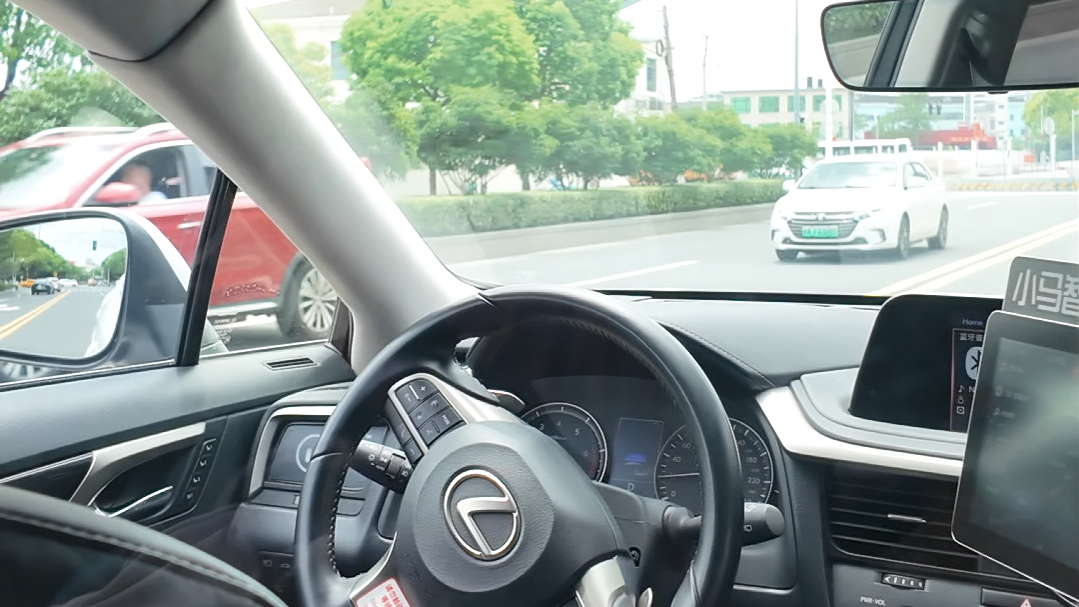

Get on a taxi without a driver, click "Go Now" on the screen inside the car, and the taxi will turn on the turn signal, automatically turn the steering wheel, and drive to the predetermined destination... On July 31, a reporter from The Paper (www.thepaper.cn) experienced a truly driverless taxi in Shanghai's Pudong New Area, with no driver or safety officer.
At the recently concluded 2025 World Artificial Intelligence Conference, a batch of demonstration licenses for intelligent connected vehicles were issued. Autonomous taxis have also entered trial operations in Shanghai's Pudong district, marking the arrival of truly driverless taxis. A car company revealed that the starting price is 14 yuan per 3 kilometers, with additional distances exceeding 3 kilometers costing 2.7 yuan per kilometer. Operating hours are Monday through Friday, from 7:30 a.m. to 9:30 p.m. Starting in Jinqiao and Huamu, the operation will gradually expand to the entire Pudong area.
Dai Dunfeng, public relations director for Pony.ai, told The Paper that its driverless taxis will be open to the public starting August 1st. During the initial trial operation, many people may be eager to try out the taxis, and due to limited availability, there may be long wait times. The company plans to gradually increase the number of taxis based on user demand.

Vehicle in motion. (Photo by Chen Yixin, reporter of The Paper)
Experience: It will accelerate when the road conditions are good, and will slow down in advance when encountering other vehicles going in the opposite direction
On the afternoon of July 31st, a reporter from The Paper arrived at Chuanqiao Road in the Jinqiao area of Shanghai's Pudong New District and entered his departure and destination on the Pony.ai app, hoping to head to a nearby shopping mall. A moment later, an empty taxi pulled up in front of the reporter, who unlocked the door on his phone and got in.
Unlike ordinary taxis, where passengers can only sit in the back seat, the reporter fastened his seatbelt and clicked "Go Now" on the screen inside the car. The car then turned on the turn signal, the steering wheel automatically turned, and the car started moving forward.
During the ride, this driverless taxi seemed to be driven by an "experienced driver": it would accelerate when the road conditions ahead were good, and would slow down in advance when someone was riding a bicycle in the opposite direction, and the braking feeling was not obvious; when encountering a red light and braking and then starting again, the starting feeling was not obvious, and the entire riding experience was relatively smooth.
After arriving at the destination, a voice prompt was heard inside the car announcing the arrival of the vehicle and that the door could be opened to get out. After the reporter got out of the car, the vehicle stopped for a few seconds and then automatically started and drove forward.

Vehicle exterior. Photo by Chen Yixin, a reporter from The Paper.
Car companies: Before obtaining a license, there are strict assessment standards at each stage
Dai Dunfeng, head of public relations for Pony.ai, explained that before issuing demonstration licenses for intelligent connected vehicles, relevant departments went through several stages, each with strict assessment criteria. "From having a safety officer behind the wheel, to having no safety officer behind the wheel, to having no one behind the wheel, each stage had very strict requirements. Only after a certain number of kilometers had been driven without accidents or violations could the vehicle be upgraded to the next stage."
Secondly, Pony.ai has 50 million kilometers of public road testing across China, giving it extensive on-road experience. On the hardware side, its vehicles are equipped with four lidars, seven cameras, and several millimeter-wave radars, capable of monitoring the movements of 500 pedestrians on the road in real time. "Perception devices like lidars and cameras act like the eyes and ears of the vehicle. This complete suite of equipment enables the vehicle to quickly and clearly see and hear road conditions."
Dai Dunfeng stated that the autonomous driving system is now essentially capable of predicting potential collisions, equivalent to the level of an experienced driver. This will improve the safety and efficiency of autonomous driving. For example, when the car detects a pedestrian ahead, it not only recognizes their presence but also determines that they may be crossing the road, allowing it to react in advance and avoid an accident.
Currently, fully driverless taxis operate using point-to-point autonomous driving. Regarding pricing, Dai Dunfeng explained that the starting price is 14 yuan per 3 kilometers, with charges accruing from the start of the journey according to the following pricing rules. Exceeding the starting mileage rate is 2.7 yuan per kilometer, and a surcharge applies: After 15 kilometers, the price per kilometer will be 3.6 yuan.
At present, Pony.ai's operating scope starts from Jinqiao and Huamu, and specifically operates on Shenjiang Road, Jinxiu East Road, Hesong Road and Yanggao Middle Road. It will gradually expand to the entire open area of Pudong and will be open to the public from August 1.